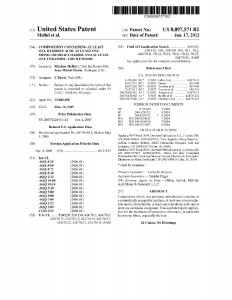Industry Focus: Strategies for Patenting Cosmetics
Cosmetic products often involve “formulation chemistry,” which is the chemistry of combining various compounds with different functions to achieve an overall desired effect. This contrasts with “new molecule” chemistry in which patent protection is sought for new chemical species, such as in the case of typical pharmaceutical patents.
In many or most cases, a new cosmetic compound will be formulated from a variety of different ingredients, all of which are individually known but which collectively are believed to provide a superior product. In such cases, you can expect U.S. Patent and Trademark Office examiners to look for prior art that shows the individual ingredients and to reject your patent application on the grounds that “it would have been obvious” to combine them to obtain your new formulation.
As a result, it is helpful to look for some keys to patentability in your formulation before filing your patent application. Here are some questions to ask to flesh out such features:
1. Are any of the ingredients being used for a purpose other than that which they are typically used for in other applications?
2. Are there any “synergistic effects,” meaning do certain of the ingredients interact in a specifically beneficial way such that the whole is greater than the sum of the parts?
3. What kind of tests can be conducted to show that your particular formulation achieves superior performance than known compositions using similar ingredients?
The answers to these questions will help you build a case for patentability should the Patent Office reject your application.
Here is a L’Oreal patent that issued on January 17, 2012. The patent claims compositions that are useful for treating damaged hair. The compositions combine alpha hydroxy acids with a saccharide and ceramide compounds. Here the inventors found that the combined ingredients increased the mechanical strength of hair more than the individual components and described the “synergistic effect” achieved by the ingredient combination.
For some inventors, another key challenge with cosmetics is providing the necessary technical details concerning the formulation. To obtain a patent, you will need to provide a description that will be sufficient to enable those skilled in the art to make and use the invention. Some inventors know ingredients only by their trade names, which can be a problem because the law does not allow inventions to be claimed based on trade names. Therefore, if possible, research the ingredients and obtain their constituents from the product labels or packaging. Try to identify the chemical family names (e.g., “alpha-hydroxy acids,” “saccharides,” and “ceramides” in the example of the L’Oreal patent). Then, look for other alternative ingredients that belong to the same chemical families so you can provide multiple examples of ingredients that will work. These details will better ensure that your patent application is deemed to be “enabled” and that if you obtain and enforce a patent, a court will construe the claims more broadly than it otherwise might.

